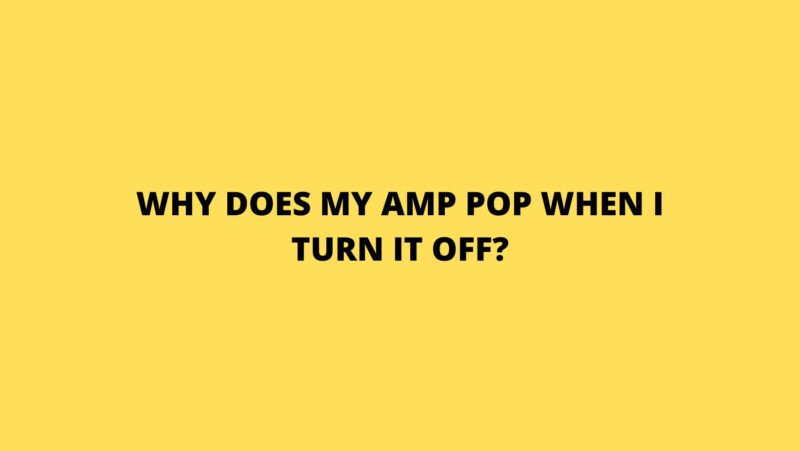Amplifiers, the heartbeats of musical expression, have the power to bring melodies to life. Yet, as the last chords resonate and you power down your amplifier, an unexpected note joins the melody—the pop. This post-performance pop can perplex and intrigue musicians and audio enthusiasts alike. In this article, we embark on a journey to demystify the reasons behind why amplifiers pop when turned off, delving into the intricate mechanics that lead to this phenomenon and offering insights into whether it’s a benign occurrence or indicative of potential issues.
The Silent Fade-Out: Unraveling the Pop
The pop that emerges as you power off your amplifier is a sonic manifestation of voltage changes that occur within the amplifier’s circuitry during shutdown. This phenomenon is a result of the interplay between various components as they adjust to the absence of power.
Deciphering the Mechanism of the Off-Pop
To truly understand why amplifiers pop when turned off, we must delve into the sequence of events that unfolds within the amplifier’s circuitry during the shutdown process:
- Capacitor Discharge: As your amplifier operates, certain capacitors store electrical energy. When you power off the amplifier, these capacitors gradually discharge. The abrupt removal of power during shutdown accelerates this discharge, resulting in a transient current flow that generates the audible pop.
- Voltage Reversal: The rapid discharge of capacitors leads to a momentary voltage reversal within the amplifier’s circuitry. This voltage reversal results in a brief and abrupt change in voltage levels, which is perceived as the characteristic pop sound.
- Signal Path Transition: Similar to startup and power-on scenarios, the pop can also arise from the transition of the amplifier’s signal path from active to inactive. As the various pathways and components within the amplifier adjust to the absence of power, voltage and current fluctuations contribute to the pop.
The Impact Factor: Harmful or Harmless?
Similar to the pop that occurs during startup, the pop when powering off an amplifier is generally not detrimental to the amplifier itself or the connected speakers. It’s a natural outcome of the abrupt cessation of power and the subsequent adjustments within the amplifier’s circuitry. However, consistent exposure to overly loud or frequent popping noises could potentially contribute to component wear and tear over an extended period.
Mitigating the Off-Pop Effect
While the off-pop is generally harmless, there are strategies you can employ to minimize its impact:
- Speaker Disconnection: Prior to powering off your amplifier, consider disconnecting your speakers or instruments. This helps reduce the audibility and impact of the off-pop on your audio setup.
- Standby Mode Utilization: If your amplifier features a standby mode, engaging it before powering down can allow the amplifier’s components to gradually stabilize, thereby reducing the intensity of the pop.
- Power Conditioner Application: Some power conditioners come equipped with delay functions. These functions introduce a time delay between power-off initiation and complete shutdown, granting the amplifier’s circuitry time to discharge and stabilize. This can effectively diminish the intensity of the pop.
Conclusion
The pop that accompanies the act of powering off an amplifier is a direct result of the complex interactions between electrical components as they adapt to the abrupt removal of power. While this pop might initially puzzle or intrigue, it is generally a benign and anticipated aspect of amplifier behavior. Recognizing the mechanisms underlying the off-pop empowers you to embrace it as an inherent part of the amplifier’s character. As you navigate the realm where music and technology converge, let the science of the off-pop deepen your understanding of the harmony between artistic expression and scientific intricacy.


